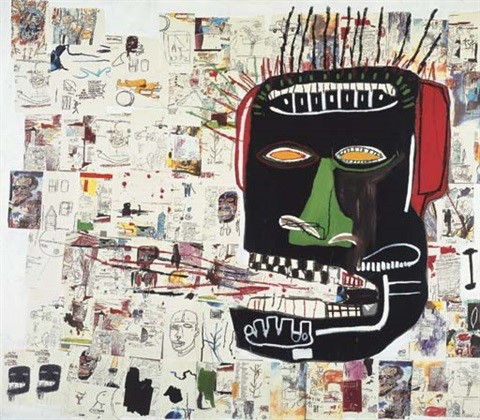Teamwork and Emotions
An earlier blog post, The End of Knowledge, envisioned that training and learning institutions would repurpose themselves to anticipate the space that artificial intelligence will conquer in the area of their core activities. Training and learning institutions will have to focus on creativity, strategic thinking, teamwork and emotional dimensions. In this post, we will explore the concepts of teamwork and emotions in depth.
Teamwork
Teamwork is not what artificial intelligence is currently best at, mainly because interactions between individuals are unpredictable. Unpredictability is truly human, even if artificial intelligence may at times produce unexpected results. These are largely due to our cognitive biases, which tend to exclude results that we don’t like or disagree with. The combination of diverse personal experience and competences in multi-disciplinary teams generates sparks that stimulate a group to explore new areas of work or reflection, or to use unconventional processes. Teamwork helps to work creatively, if the group allows for it. A simple experiment would be to create poetry in a diverse group – the result will reflect all members’ inputs without being a simple collage of individual propositions.
Traditional group activities in training workshops are moments when all can express their ideas and opinions, and when conclusions tend to be the consensual synthesis of the deliberations. But one may doubt that such group activities truly unleash the full potential of teamwork. Working as a team is about creating together, like in team sports. The product of co-creation is the fusion of all contributions in a joint process (where rules are set as the team moves on) and product (of which everyone has equal ownership). As emerging complex questions often require new, more articulate approaches, teamwork is effective in reaching appropriate solutions.
Teamwork works when all members are considered partners, joining forces to achieve a common goal. When the pressure of achieving a result and taking risks is absorbed by the team, rather than by the individual, everyone’s motivation tends to increase, and remains high as long as the team delivers and its members are nourished. When communication is open and fluid, tensions tend to be minimal and production speed increases. But all this can only be achieved provided there is mutual trust and respect among the team members.
Have you observed that there are often more smiling faces in societies economically less wealthy than ours, suffering from unsatisfied (basic) needs and forgotten in the public investment agenda? The explanation is probably a combination of less lonely, socially disconnected lives and more space for human emotions.
 Jean-Michel Basquiat, Glenn, 1985
Jean-Michel Basquiat, Glenn, 1985
Emotions
Artificial intelligence may provide adequate rational responses, which will not necessarily satisfy our personal emotional dimensions or an organization’s emotional culture. The outcomes of artificial intelligence are data based. They are not intended to promote trust among colleagues; even if the latter would be essential to make the best use of the outcomes. Decisions and human interactions in organizations often depend on our individual preferences, rather than or in addition to rational thinking.
Individual emotions are what they are in a given circumstance, they aren’t right or wrong. But through emotional intelligence one can manage a team or an organization in a way that negative emotions are limited and positive ones stimulated. Emotions are many but the dominant ones are disgust, joy, fear, sadness, surprise, anger and trust.
Imagine the impact your superior makes when greeting colleagues with a sad or angry face. It would be difficult to request enthusiasm or positive thinking from that team. Even our body language influences other people’s emotions. Management based on fear to make mistakes, challenge authority or not know something, causes disasters in many organizations. The work environment also plays a determining role in shaping our emotions. Pictures of satisfied partners and joyful people on the walls will induce a different atmosphere from framed lists of leading principles, regulations and possible sanctions if one does not comply.
The role of emotions at the individual and organizational level could be measured by performing a simple exercise. Ask people what in their view would be an unacceptable change for their organization. By listing all their contributions, one will probably touch upon fundamental values and preconceived ideas that the organization considers unchallengeable or that have never been challenged due to inertia. An organization would be better equipped to open up its rigid positions by bringing in the emotional dimension
If change can only be envisaged provided organizations consider the emotional dimensions of its personnel, emotions also have their limits, as they tend to be conservative, not forward looking. We use our emotions to protect ourselves and feel good. Most resistance to change is not brain-based; it’s about personal preferences, perceptions, footprint of past life experiences.
One approach to limit the obstacle that emotions may represent is to shift one’s analysis from the immediate impact that a change may generate – and where one may feel that they lose too much – to long-term improvement and more stimulating/satisfactory solutions. When the organization models the emotions that it envisages to promote to accompany a change process (e.g. supporting, including, making others feel good), it will facilitate its alignments with employees’ individual emotional needs.
Bibliography:
At the Hearty of Leadership – How to Get Results with Emotional Intelligence, Joshua Freedman, Ed. Six Seconds, 2007
Creative Genius, Peter Fisk, Capstone Publishing, 2011
Manage your Emotional Culture, Harvard Business Review, 2016, https://hbr.org/2016/01/manage-your-emotional-culture
On Change Management, Various incl. John P. Kotter, David A. Gavin, Debra E. Meyerson, Harvard Business Review Press, 2011
The Storm of Creativity, Kyna Leski, The MIT Press, 2015
